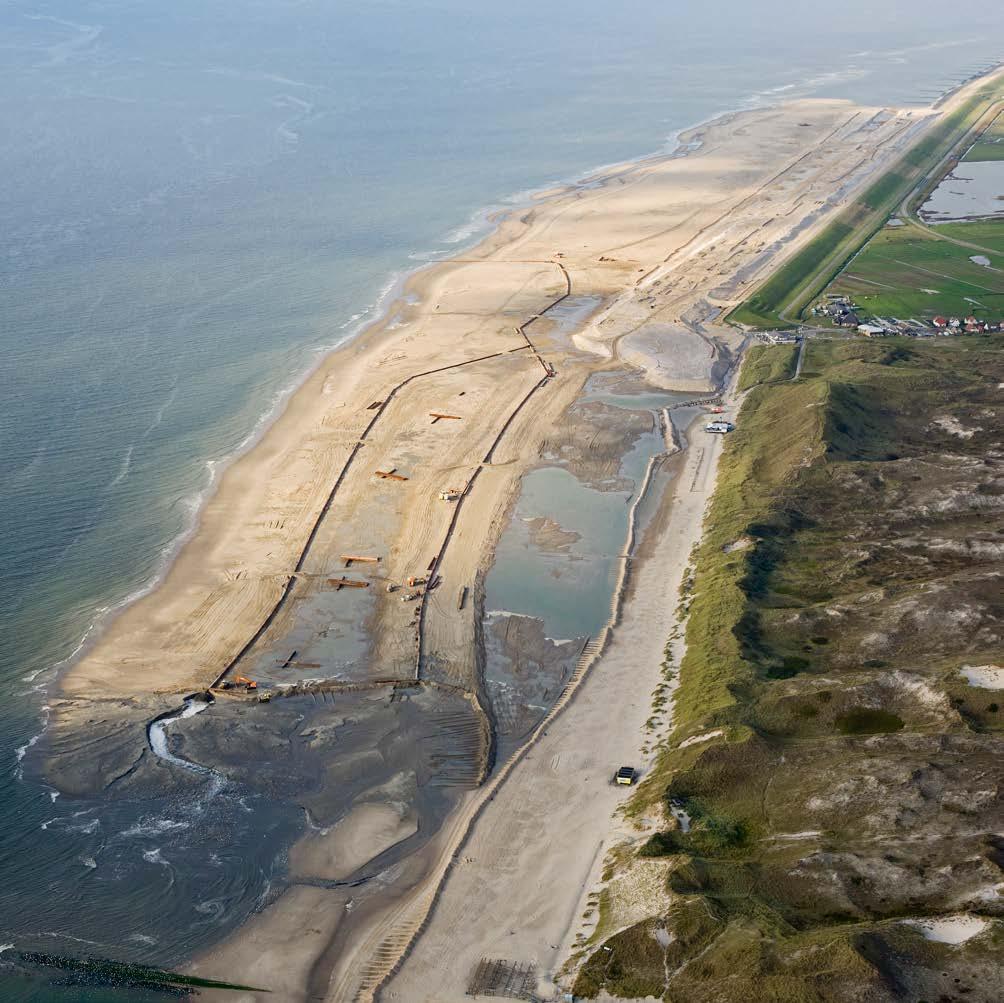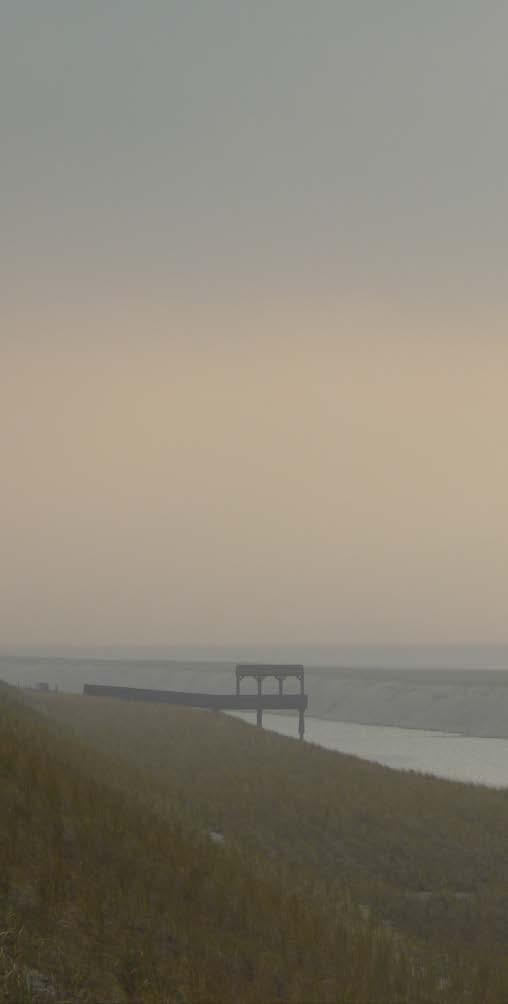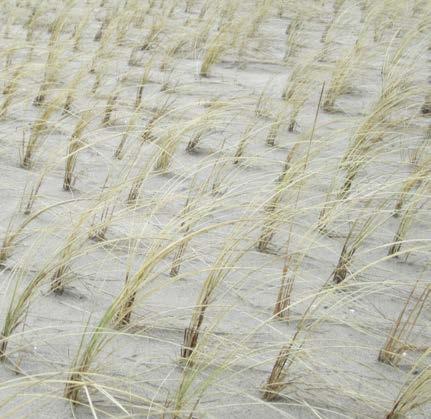
4 minute read
Hondsbossche Dunes
Petten, the Netherlands
Having been categorized as one of the ten weakest points along the Dutch coastline, the Hondsbossche and Pettemer sea dike no longer met safety standards. The structure would need to be fortified to stand 4 meters higher and 20 meters wider; if these specifications were met, the dike was projected to then be capable of withstanding a one-in-ten-thousand-year superstorm, one of the Dutch government’s safety requirements. However, the existing infrastructure behind the dike made these modifications unfeasible. Instead, the regional water board opted to strengthen the coastline itself by creating broad dunes and beaches. A soft, natural barrier of 30 million cubic meters of dredged sand was placed on the sea side of the dike by EcoShape to create a soft, shallow foreshore with a variety of dune habitats. The newly strengthened shoreline—including the dike—was completed in 2015, then renamed “Hondsbossche Dunes.” Shortly afterwards, an innovation project was set up, running from 2015 to 2018. The aim of this project was to learn more about efficient sand nourishment that contributes added value to nature and leisure.
Article cover: The Hondsbossche Dunes during construction. (Photo by Van Oord Boskalis joint venture—Hondsbossche and Pettemer Sea Defence)
Producing Efficiencies
This project represents a unique opportunity to study how nature responds to a sand nourishment on a large scale. Three research themes were identified: (1) predictability of habitat development, (2) geometry development, and (3) visitor perception of the project.
An improved understanding of these issues is crucial to developing the optimal design of future sand solutions. A clearer picture will also be provided of realistic possibilities for the management and maintenance of these solutions. The research results will provide new knowledge about where soft approaches deliver added value and about possible financial benefits in comparison with hard solutions. The Hondsbossche monitoring program will be linked to ongoing scientific research on the use of sand for reinforcement projects.
Using Natural Processes
The dune was strategically designed to be shaped naturally over time by aeolian processes without loss of overall sand volume; this is one respect in which the project is an excellent example of Building with Nature. The aeolian transport process was facilitated by the use of brushwood screens; variation in terrain elevation; vegetation; and cross-shore dune profile shape.
The project’s design also included humid dune slacks, a feature that will enable wetland development—thereby providing a habitat that is typically diverse in species.

Broadening Benefits
The Hondsbossche Dunes project harmonizes multiple, simultaneous functions: providing coastal safety, stimulating the local economy, and enhancing natural habitat are just a few examples of the benefits this project delivers. The design consists of a soft shallow foreshore (the beach) with various dune habitats; the area now attracts a large number of visitors. The connected systems make up the area’s primary flood defense while providing the required spatial quality. Bike paths were also constructed along the dunes to afford additional recreation opportunities to the public.

Promoting Collaboration
The innovation project was executed by EcoShape and funded by an alliance of the Dutch Flood Protection Program; Hollands Noorderkwartier Regional Water Board; and the EcoShape research consortium, which consists of several partners: the Rijkswaterstaat, HKV, Witteveen+Bos, Deltares, Wageningen University & Research, and Arcadis.
At every stage of the project, stakeholder engagement has been a priority. In the dialogue phase of the tender stage, communication between the tendering contractors and relevant stakeholders—including the public—was carefully organized. After award of the contract, interaction with the public was organized again, since the project activities attracted a large number of visitors. Information was posted at the project location itself, at a visitors’ center, and online; communication was presented from the perspective of both the client and the contracting consortium.











